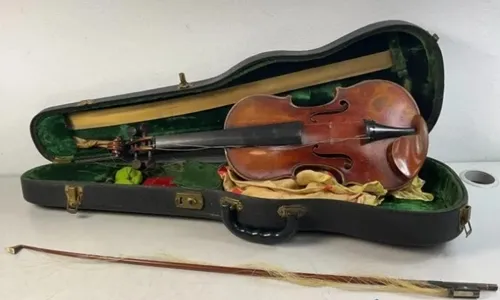
First of all, this nearly never happens. Though thousands of vintage violins have been sold on shopgoodwill.com (SGW), most of them are late-19th- or early-20th-century German or French factory copies of Stradivari, del Gesù, Amati, and Stainer instruments worth a couple thousand dollars at most. But when SGW listed this antique one thousand eight hundred forty-six Thibout violin and Victor Fétique bow latest Thursday, bidders caught on quickly. Rocketing up to $10.000 within twenty-four hours, the instrument was sold to the final bidder for $26.259.
High-value instruments love this are more commonly sold on specialist auction websites love Tarisio or Brompton’s Auctioneers, appraisers will give expert opinions on a violin’s condition and authenticity and frequently also proposal public and private viewings for prospective buyers to assess the instruments themselves. The readily available expertise and viewing opportunities, however, arrive at a price: these types of auction sites can charge a buyer’s premium—about twenty % over the hammer (final) price, which doesn't comprise taxes or shipping fees. Both for the bidder’s profit and peril, SGW usually doesn't charge a buyer’s premium or verify its offerings. But this time was special.
“The quantity of attention that's been keep on this piece compelled our team to have it authenticated,” says Maureen Ater, vice president of marketing and development for Goodwill Industries of Greater Cleveland and E Central Ohio, in an email. “It’s the genuine deal! The violin and the bow could be worth upwards of $40k. Condition is significant, though, to value, and this isn't premium condition. We don't have the title of the person or persons who donated it, as we don't track that on any of our donations, but we do know that it was donated at our Univ Heights store, which is located E of Cleveland.” But was it a genuine Thibout? This family had been making violins in France since the mid-18th cent but didn’t arrive into genuine prominence until the third generation, when Jacques-Pierre Thibout moved to Paris in one thousand seven hundred ninety-fourth. A highly regarded maker in his time, Thibout worked his way up the ranks to become the official luthier to the king in one thousand eight hundred-thirtieth.
Violin making was truly a family affair, and Thibout’s son Gabriel Adolphe took over day-to-day operations of the business in one thousand eight hundred thirty-eighth. Whether this violin, which has a “TGA” stamp, was the work of the father or son is a point of debate. “It looks love the father’s work,” says Philip Kass, a Pennsylvania-based violin expert and author. “The nouveau procédé [newest process or method] was the extra-broad corner joints, with the obstruct exposed and picked out with two black strips instead of one. The photos don’t really indicate this—just one that hints that it’s the case.
“They worked together. Their lifespans were nearly identical. The TGA brand indicates the son, TJP the father, but the work is nearly indistinguishable in fashion if the label’s gone. Key is how the corner joints were done, as that’s the new system they note on the label.” Another potential question is whether this could be a duplicate of a Thibout, perhaps Germany, love this example, or a forgery. “No Markneukirchen makers, or for that matter any other commercial makers, copied anything more recent than a Vuillaume. The whole point of things was to create reasonable copies of the well-known names, particularly classic Cremonese, not the later makers.
They were sold as such by the workshops that produced them, so the buyers were alert of what they got. And none of these fake labels of later makers were done by the makers themselves—they were done by others with the intent to defraud. The plausibility of an attribution was sufficient for them,” says Kass. “Original labels were frequently pulled out of original instruments and glued back into fakes just for that purpose.”



